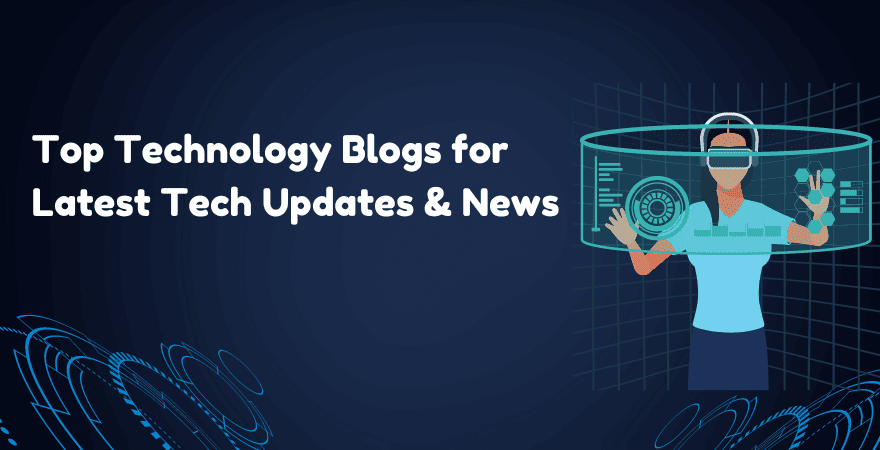The Development of the Best tech blog: A Trip Through Tech History and Future Trends
The Development of the Best tech blog: A Trip Through Tech History and Future Trends
Blog Article
Comprehending the Increase of Side Computing in Today's Digital Globe
In the quickly progressing landscape of technology, edge computer becomes a critical pressure, improving just how information is refined and used. This paradigm shift is driven by the proliferation of IoT gadgets and an escalating demand for instantaneous information handling. By transitioning information monitoring closer to the source, side computer addresses important latency concerns while maximizing bandwidth use and enhancing security actions. As industries pivot in the direction of smarter, more reliable systems, recognizing the nuances and ramifications of this technological advancement ends up being essential. What does this mean for future technologies and the electronic ecological community in its entirety?
What Is Edge Computer
Edge computer, although a relatively recent improvement in the world of technology, basically changes how information is refined and managed by bringing computation and information storage closer to the area where it is needed. Unlike traditional cloud computing designs, which frequently rely upon centralized data centers that can be geographically far-off, edge computing decentralizes data handling. This proximity lowers latency, improves real-time information processing, and boosts the total customer experience by making certain quicker feedback times.
At its core, edge computing entails a network of local gadgets and infrastructure, such as routers, portals, and sensing units, capable of refining data at or near the source. This localized handling ability is particularly crucial for applications requiring instant data analysis, such as independent vehicles, commercial automation, and smart cities. In addition, by offloading information processing tasks from main web servers, side computer minimizes transmission capacity requirements and boosts information personal privacy and security, as sensitive info can remain on-site instead of going across considerable networks.

Trick Chauffeurs of Fostering
Numerous aspects are driving the adoption of side computing in today's digital landscape. Edge calculating addresses this demand by making it possible for data handling closer to the data source, minimizing latency and enhancing real-time decision-making capabilities.
One more substantial vehicle driver is the need for boosted data transfer effectiveness. Centralized cloud systems can end up being overloaded with the sheer quantity of information produced by IoT tools, bring about traffic jams (Best tech blog). By processing data at the side, organizations can minimize network congestion and boost total system efficiency
Moreover, security and personal privacy issues are pressing companies toward side computer. By processing delicate information locally, business can alleviate dangers related to information transmission and direct exposure to prospective cyber risks.
The surge of applications calling for real-time processing, such as self-governing vehicles and augmented reality, also necessitates the quick action times that border calculating gives. Collectively, these drivers are making side calculating an indispensable part of contemporary IT framework, leading the way for its extensive adoption across various sectors.
Advantages Over Cloud Computer
How does side computer distinguish itself from traditional cloud computer? Mostly, edge computer brings information processing closer to the resource of information generation, frequently on nearby servers or regional tools, instead than counting on centralized information.
In addition, side computer enhances bandwidth performance (Best tech blog). By refining data in your area, only the essential information is transferred to the cloud for further evaluation or storage, lowering the quantity of information that traverses the network. This not only relieves network congestion yet additionally lowers information transmission expenses
Side computer likewise offers enhanced information personal privacy and security. Delicate data can be processed in your area without being sent out to the cloud, lessening the exposure to possible cyber dangers. This is especially valuable for markets managing secret information, such as health care and economic solutions.
In addition, edge computer makes certain greater durability and dependability. Local processing enables proceeded operation even when connection to the cloud is jeopardized, preserving essential features and services despite possible network disruptions. These benefits jointly demonstrate edge computer's transformative possibility in optimizing efficiency and safety in electronic communities.
Factors To Consider and difficulties
While edge computer offers numerous advantages, it likewise offers distinct difficulties and considerations that have to be resolved to totally understand its capacity. Furthermore, handling and checking a decentralized network of edge tools can be intricate, requiring innovative devices and techniques to make certain smooth operation and upkeep. Best tech blog.
One more factor to consider is the scalability of edge computer solutions. As the number of linked gadgets grows, so does the need for processing power at the edge, which can cause source restrictions. Organizations needs to very carefully plan their facilities to fit this growth without compromising performance or performance.
Interoperability is another vital aspect. With different software and hardware components involved, guaranteeing compatibility and seamless assimilation can be challenging. Standardization try this website initiatives are important to promote interaction between diverse systems.
Future Trends in Edge Computer
Preparing for the future, side computer is positioned to change numerous sectors by making it possible for quicker data handling and decreasing latency. As the quantity of information produced by IoT gadgets continues to expand, side computer will come to be increasingly vital in managing this influx efficiently.
An additional arising fad is the advancement of edge-native applications made specifically to leverage the one-of-a-kind capabilities of edge computing. These applications will certainly enhance efficiency and resource usage, bring about enhanced visit this page performance throughout numerous markets. Innovations in 5G innovation will certainly even more bolster side computing by supplying the necessary framework for high-speed, low-latency communication between tools and edge nodes.
Conclusion
Side computer's surge is driven by the expansion of IoT devices and the need for real-time information handling, which improves efficiency by minimizing latency and decentralizing data monitoring. This approach alleviates bandwidth ineffectiveness and safety and security concerns, promoting developments in applications like autonomous vehicles and wise cities. Regardless of obstacles such as infrastructure intricacy and combination, the future of edge computer promises a more responsive electronic ecosystem, with continued developments shaping its evolution and broadening its applicability across markets.
Side computer, although a relatively recent improvement in the realm of modern technology, essentially transforms how data is refined and managed by bringing computation and information storage closer to the place where it is required. Unlike conventional cloud computer versions, which commonly depend on centralized information centers that can be geographically distant, side computing decentralizes information handling. In addition, by unloading information processing tasks from central web servers, side computing lowers data transfer demands and improves information privacy and safety, as sensitive information can continue to be on-site instead than going across comprehensive networks.

Report this page